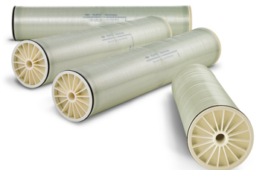(Okayama, Japan, 20 September 2012) This e-Bulletin highlights pioneering insights into water splitting/photosynthesis, analysis of the Itokawa asteroid brought to Earth by Japan’s Hayabusa space probe, stemming the spread of cancer and identification of a rice transporter for manganese and cadmium uptake
|
Press Release Source: Okayama University, Japan, Planning and Public Information Division For immediate release: 20 September 2012 Okayama University, Japan publishes the inaugural issue of its online newsletter, Okayama University e-Bulletin: http://www.okayama-u.ac.jp/user/kouhou/ebulletin/index.html Okayama University e-Bulletin offers news and views from one of Japan’s largest comprehensive universities internationally recognized for its dynamic and innovative approach to interdisciplinary scientific research and pioneering educational programs” (Okayama, Japan, 20 September 2012) From pioneering insights into water splitting/photosynthesis and analysis of the Itokawa asteroid brought to Earth by Japan’s Hayabusa space probe, to stemming the spread of cancer and identification of a rice transporter for manganese and cadmium uptake—the Okayama University e-Bulletin highlights a wide range of pioneering research and related activities at Okayama University.
Research highlights featured in the September 2012 issue of Okayama University e-Bulletin include: Evolving planets get a bumpy ride http://app.aaas-science.org/e/er?s=1906&lid=20732&elq=d722a92dad22433fb302cf72e5d798e2 Asteroids are considered to comprise intermediate products in the evolution of solar bodies. The Japan Aerospace Exploration Agency (JAXA) sent a probe to investigate the near-Earth asteroid 25143 Itokawa with the aim of learning more about the evolution of the solar system. Eizo Nakamura and colleagues at Okayama University and the Japan Aerospace Exploration Agency (JAXA) have now studied samples retrieved by the probe — the first reported analysis of grains taken directly from a solar body in space.
Stemming the spread of cancer http://app.aaas-science.org/e/er?s=1906&lid=20733&elq=d722a92dad22433fb302cf72e5d798e2 Cancer stem cells (CSCs) have been proposed as an explanation for the spread of cancer. These cells are tumorigenic and have the capacity of both self-renewal and differentiation into a range of various cell types. In this concept, malignant tumors provide heterogeneous aspects derived from CSCs as well as normal stem cells provide tissue specific phenotype in response to their microenvironment.
Identification of a rice transporter for manganese and cadmium uptake http://app.aaas-science.org/e/er?s=1906&lid=20734&elq=d722a92dad22433fb302cf72e5d798e2 Rice (Oryza sativa) is an important dietary source of cadmium and can accumulate very high levels of manganese without toxic effects. However so far there has been little understanding of the uptake and transport mechanisms for these minerals. In depth studies by Jian Feng Ma and colleagues at Okayama University in Japan have revealed how OsNramp5, a member of the natural resistance macrophage protein (Nramp) family, enables uptake of specific minerals in rice.
Water splitting: Ultrahigh resolution data reveals reaction mechanisms http://app.aaas-science.org/e/er?s=1906&lid=20735&elq=d722a92dad22433fb302cf72e5d798e2 Oxygenic photosynthetic organisms utilize energy from the sun to split water into protons, electrons and oxygen — products vital to life on earth. The process takes place through light-induced electron transfer reactions in a membrane protein complex photosystem II, but so far the resolution of structural studies on the protein complex has been too limited to ascertain the mechanism of these reactions in detail.
The Okayama University e-Bulletin also includes updates of news, events, and intellectual property Feature President Kiyoshi Morita’s vision for Okayama University: The global research and education hub at the heart of Japan. http://app.aaas-science.org/e/er?s=1906&lid=20730&elq=d722a92dad22433fb302cf72e5d798e2 Intellectual Property and Enterprise BIOX: Amorphous iron oxide nanostructures of bacterial origin for applications including anodes for Li ion batteries. http://app.aaas-science.org/e/er?s=1906&lid=20740&elq=d722a92dad22433fb302cf72e5d798e2 Topics Letters from alumni Graduated in 2003 from Faculty of Science Department of Mathematics Currently, head of the Benesse Corporation office in Beijing, China http://app.aaas-science.org/e/er?s=1906&lid=20742&elq=d722a92dad22433fb302cf72e5d798e2 Okayama Travelogue Okayama Korakuen: one of the three most beautiful gardens in Japan http://app.aaas-science.org/e/er?s=1906&lid=20743&elq=d722a92dad22433fb302cf72e5d798e2
Club Activities Okayama University Weight Training Club: Work hard play hard! http://app.aaas-science.org/e/er?s=1906&lid=20744&elq=d722a92dad22433fb302cf72e5d798e2
Further information: Okayama University 1-1-1 Tsushima-naka , Kita-ku , Okayama 700-8530, Japan Planning and Public Information Division E-mail: [email protected] Website: http://www.okayama-u.ac.jp/index_e.html
About Okayama University Okayama University is one of the largest comprehensive universities in Japan with roots going back to the Medical Training Place sponsored by the Lord of Okayama and established in 1870. Now with 1,300 faculty and 14,000 students, the University offers courses in specialties ranging from medicine and pharmacy to humanities and physical sciences. Okayama University is located in the heart of Japan approximately 3 hours west of Tokyo by Shinkansen. Website: http://www.okayama-u.ac.jp/index_e.html |




